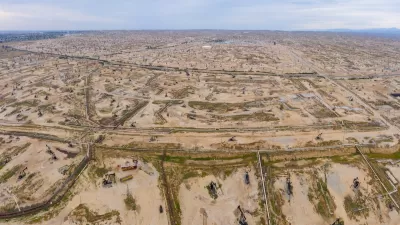Paul Stenquist analyzes the surprising influence that geography has on the carbon footprint of electric vehicles.
As Americans increasingly turn to electric vehicles due to rising gas costs and interest in reducing greenhouse gas emissions, a new report shows that another set of calculations should be considered. The report, released by the Union of Concerned Scientists on Monday, shows that "the effect of electric vehicles on the amount of greenhouse gases released into the environment can span a wide range, varying with the source of the electricity that charges them. "
Their well-to-wheels analysis considers the full cycle of energy production. "It demonstrates that in areas where the electric utility relies on natural gas, nuclear, hydroelectric or renewable sources to power its generators, the potential for electric cars and plug-in hybrids to reduce carbon dioxide emissions is great. But where generators are powered by burning a high percentage of coal, electric cars may not be even as good as the latest gasoline models - and far short of the thriftiest hybrids."
Stenquist examines the geographical breakdown of electricity generation. Electricity in the midsection of the U.S. is generated in large part by coal, while cities like Seattle and Los Angeles, and surprisingly, Buffalo and New Orleans, are in regions where there is cleaner power.
According to data released in 2010 by the United States Energy Information Administration, "45 percent of the country's electricity is generated by burning coal, the dirtiest fuel. Natural gas, a much cleaner fuel, accounts for 24 percent of electricity production, a figure that is shifting rapidly with price swings. Nuclear plants generate 20 percent of the nation's power, while wind, solar and geothermal sources provide 3 percent." While these numbers help to educate, they also affirm the need for changes in electric power generation in order to maximize the use of electric and hybrid cars.
FULL STORY: How Green Are Electric Cars? Depends on Where You Plug In

Study: Maui’s Plan to Convert Vacation Rentals to Long-Term Housing Could Cause Nearly $1 Billion Economic Loss
The plan would reduce visitor accommodation by 25% resulting in 1,900 jobs lost.

Alabama: Trump Terminates Settlements for Black Communities Harmed By Raw Sewage
Trump deemed the landmark civil rights agreement “illegal DEI and environmental justice policy.”

Why Should We Subsidize Public Transportation?
Many public transit agencies face financial stress due to rising costs, declining fare revenue, and declining subsidies. Transit advocates must provide a strong business case for increasing public transit funding.

Paris Bike Boom Leads to Steep Drop in Air Pollution
The French city’s air quality has improved dramatically in the past 20 years, coinciding with a growth in cycling.

Why Housing Costs More to Build in California Than in Texas
Hard costs like labor and materials combined with ‘soft’ costs such as permitting make building in the San Francisco Bay Area almost three times as costly as in Texas cities.

San Diego County Sees a Rise in Urban Coyotes
San Diego County experiences a rise in urban coyotes, as sightings become prevalent throughout its urban neighbourhoods and surrounding areas.
Urban Design for Planners 1: Software Tools
This six-course series explores essential urban design concepts using open source software and equips planners with the tools they need to participate fully in the urban design process.
Planning for Universal Design
Learn the tools for implementing Universal Design in planning regulations.
Smith Gee Studio
Alamo Area Metropolitan Planning Organization
City of Santa Clarita
Institute for Housing and Urban Development Studies (IHS)
City of Grandview
Harvard GSD Executive Education
Toledo-Lucas County Plan Commissions
Salt Lake City
NYU Wagner Graduate School of Public Service





























